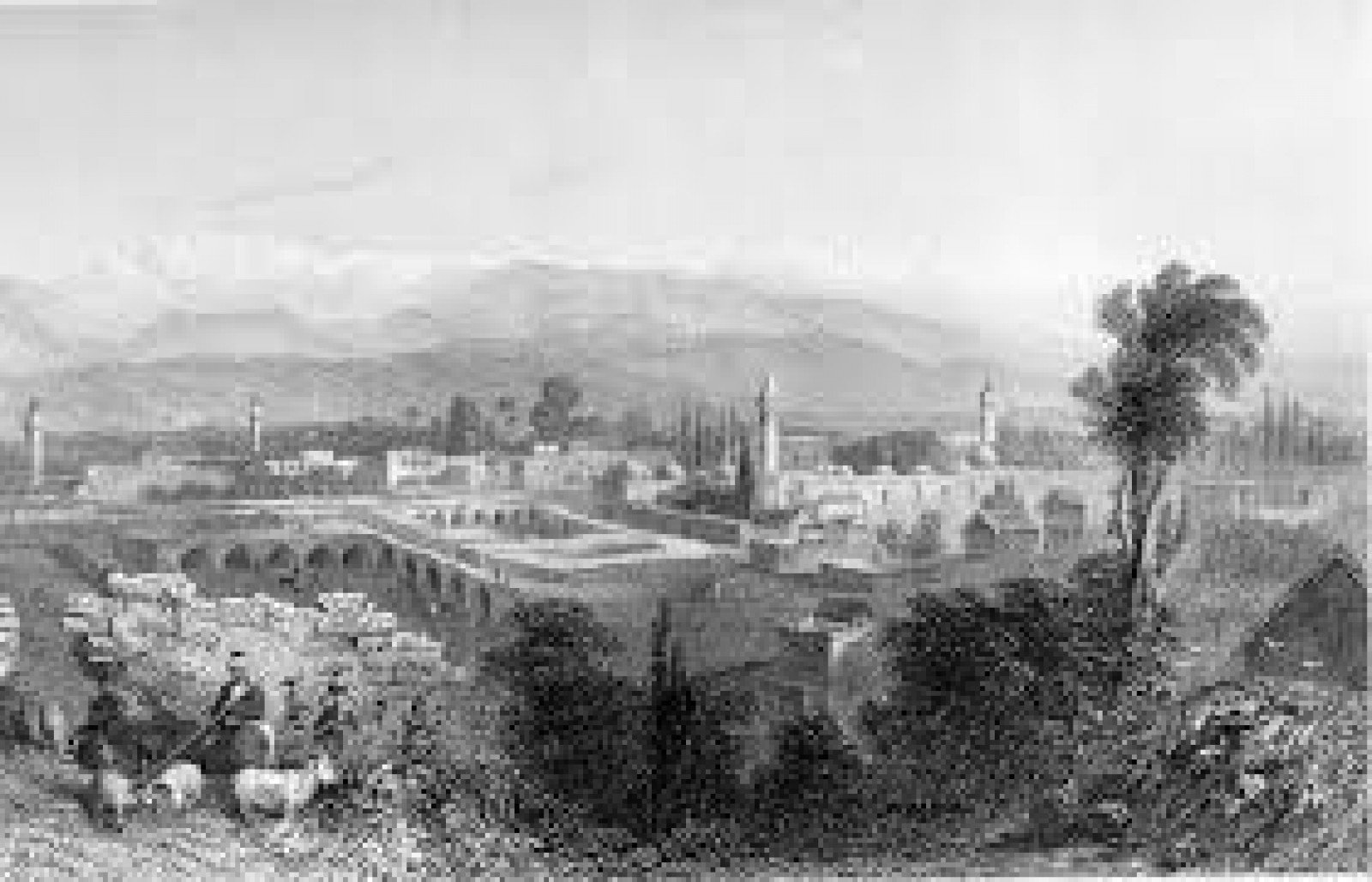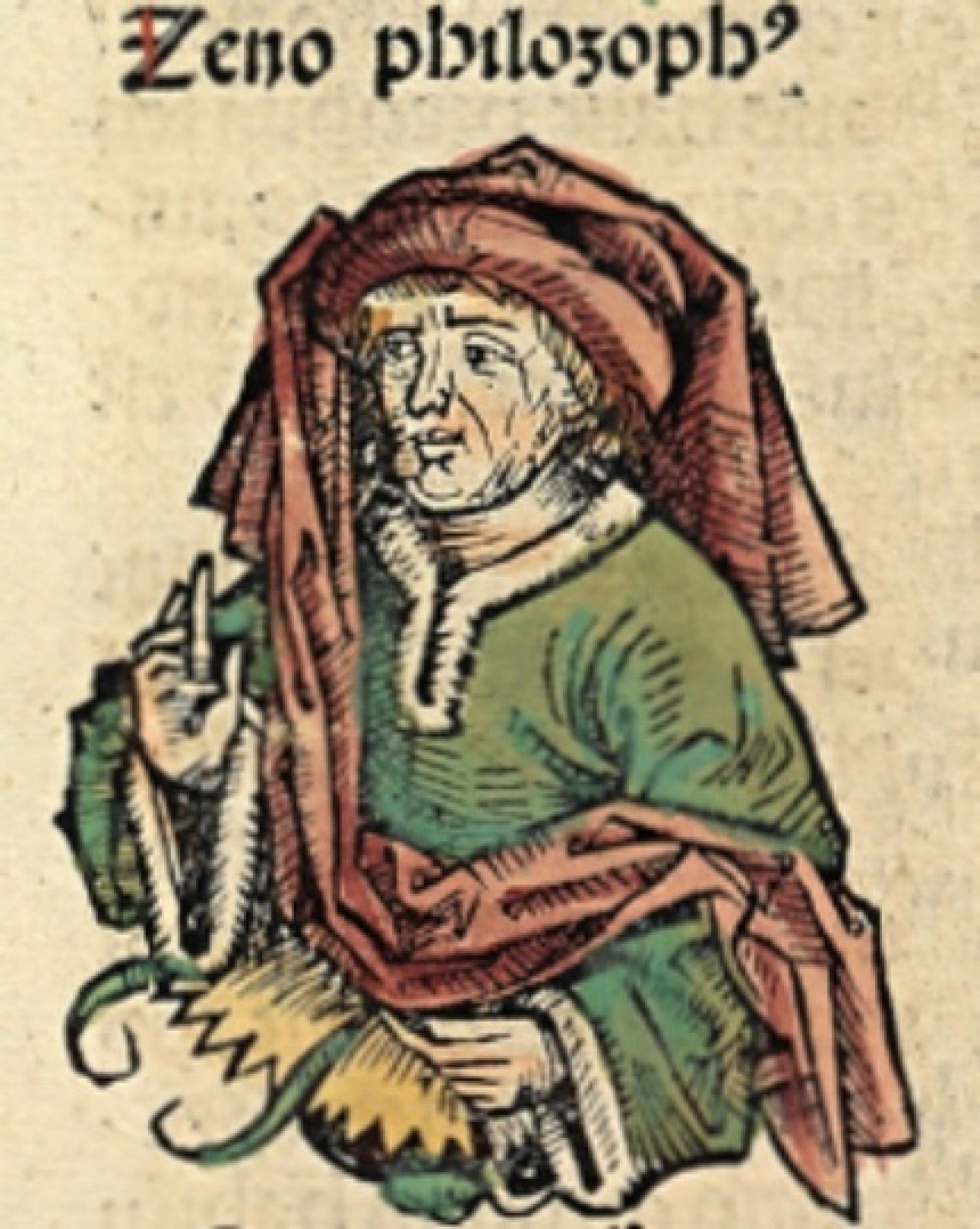STOACILIK FELSEFESİNDE TARSUS’UN YERİ - SIGNIFICANCE OF TARSUS IN STOIC PHILOSOPHY
15.12.2019Aziz Pavlus’un doğum yeri olarak tanınan Tarsus, daha İsa’dan önce ikinci bin yılda Hitit İmparatorluğu’nun önemli bir kentidir. Roma döneminde bile Hitit Tanrısı Sandan’a tapınmalarının devam etmesi, yabancı egemenlikler altında olsa bile geleneklerine ne kadar bağlı kaldıklarını göstermektedir. İsa’dan önce 9. Yüzyılda Salmaneser III yönetimindeki Asurlular tarafından alınan Tarsus, 6. Yüzyılda Perslerin eline geçer. İsa’dan önce 333’de Tarsus’a gelen Büyük İskender, kentin Pers’ler tarafından yıkılmasını önler. Tarsus bundan sonra Seleukos yönetimi altında Helenistik yapısını sürdürerek Roma döneminde altın çağını yaşar ve Kilikya bölgesinin başkenti olur.

Resim-1:Roma döneminde altın çağını yaşayan Tarsus
Helenistik ve Roma dönemlerinde Tarsus’ta bilim, felsefe ve eğitim çok ileri düzeydedir. Tarsus’ta ki eğitim düzeyi o hale gelmiştir ki; Atina ve İskenderiye okullarını geçmiş, üniversitesi olan, filozofların ders verdiği, dışarıdan ders vermek için birçok düşünür ve filozofun geldiği bir kent haline dönüşmüştür. Strabo’nun anılarına göre Tarsus Üniversitesi'nin kentin siyasal hayatı üzerinde büyük bir etkisi vardır. Augustus döneminde Tarsus Üniversitesinin iki filozofu Athenodorus ve Nestor kentin politik önderliğini yaparak Tarsus’u dünyanın en önemli kenti haline getirmişlerdir. Ramsay’a göre “Augustus döneminde Tarsus, bir üniversitenin birbirini izleyen iki başkanı aracılığı ile devleti yönetmesinin tarihte bilinen tek örneği” olmuştur.


Resim-2:Tarsus Üniversitesinin iki filozofu Athenodorus ve Nestor
Tarsus aynı zamanda o dönemlerin Doğu ve Batı kültürünün birleştiği bir kent olup, Stoa felsefesinin de merkezi konumundadır. Çünkü filozof Atenodorus (İ.Ö.74-İ.S.7) zamanının önde gelen Stoacısı ve bir dönem Augustus’un öğretmenliğini yapmıştır. Atenodorus İ.Ö. 15. yılda Tarsus’a gelir ve Augustus’un yetkisini imparator adına kullanarak Tarsus kentinin anayasasını düzenler ve Nestor ile birlikte Tarsus’u yönetir.
Bu dönemde Tarsus’ta iki önemli düşünüş hakimdir. Birincisi Mithras Gizemciliği kentin dini inanışına daha hakimdir. Diğeri ise en güçlü felsefe akımı Stoacılıktır ve dünyadaki en önemli Stoa merkezlerinden biridir. Çünkü o dönemde bir çok Stoa felsefecisi ve filozofu Tarsus’ta toplanmıştır. Bunlardan en ünlüleri Soli’li Aratos, Tarsus’lu Zeno, Atenodorus ve Soli’li Atenodorus’dur. Mithras dini ve Stoacılık felsefesi aslında gökyüzü ve astroloji olaylarına göre şekillenen bir düşünce sistemidir. Bu nedenle her ikisinin o dönemde hakim olması tesadüf değildir.


Resim-3:Stoa felsefesinin en ünlü iki filozofu Aratos ve Zeno
Stoacı düşünce üç önemli özellikten oluşmaktaydı. Bunlardan birinci ve en önemlisi astroloji ve astral inanç ile ilgili olanıdır. İkinci inanç özelliği yıldızların devinimiyle belirlenen çok uzun periyodik süreçler ve dünya dönemleri ile ilgilidir. Stoacıların bu düşüncesine göre, bütün evren periyodik olarak önce bir kıyamet sonucu tamamen yok olacak, sonra da yeni bir kıyamete kadar devam edecek yeniden yaratılma sürecine girecekti. Stoacılar bir kıyamet ile sonraki arasındaki sürenin, yani “uzayın ömrü”nün gezegenlerin devinimi ile belirlendiğine inanıyorlardı. Ve buna “Büyük Yıl” adını vermişlerdi. Stoacıların üçüncü özelliği tanrıları ve mitolojik figürleri, kozmik ve doğal güçleri temsil edecek biçimde allegorize etme gelenekleridir.
Stoa felsefesinin tarihi açısından Zenon’dan sonra gelen isim Soli’li filozof Krisippus’tur (İ.Ö. 280-207). Krisippus Stoacı düşünceyi sistemleştiren kişidir. Krisippus’un Soli’li olması aynı zamanda Tarsus kenti ve çevresinde felsefeye gösterilen ilginin de bir kanıtıdır. Krisippus, İ.Ö. 232’den 207’ye kadar Stoa okulunun önderidir ve ölümünden sonra yerini Tarsuslu Zeno alır. Tarsuslu Zeno’dan sonra Stoa okulunun önderliğini önce Dicleli Seleukos, sonra da Babilli Diogenes yapar. Diogenes’i izleyen ise yine bir Tarsuslu olan Antipater (İ.Ö.200-129) olur. Antipater ile çağdaş olan Stoacılar arasında onun öğrencileri olan Tarsuslu Arkedemus ve Tarsuslu Heraklides’in yanısıra, Krisippus’un yeğeni Aristokreon’un isimlerini sayabiliriz. Tarsus bölgesinden çıkan Stoacı filozofların önem ve sayısına bakarak, Tarsus Üniversitesi çevresinde Stoacılığın en etkin felsefe okulu olduğunu söyleyebiliriz.
Stoacı düşünce astronomi ve astroloji ile çok ilgilidir, bu nedenle astral din inançları vardır. Stoacılara göre uzay ve yıldızlar canlı kutsal varlıklardır. Stoa felsefesini oluşturan Zeno, Kleantes ve Krisippus bir tür astral dini inanç sahibidirler. Stoacılık felsefesinin en büyük düşünürü Zeno, ay, yıl ve mevsimlere ve yıldızlara kutsal bir anlam yükler. Kleantes’e göre; “Güneşin ateşi, ruhun varlığıyla ısınan bir gövdenin sıcaklığına benzediğine göre, güneşin de bir ruhu olmalıdır. Cennet dediğimiz sıcak ve parlak ortamda meydana gelen yıldızlar da öyle.” Kleantes, aynı zamanda “varolan bütün kutsallığı yıldızlara” bağlar. Krisippus ise inancını şöyle açıklar; “Uzay bir tanrıdır, yıldızlar tanrıdır, dünya da tanrıdır; ama en büyük tanrı Cennet’te oturan Akıl’dır.”


Resim-4:Stoa felsefesinin astral din inançlarına sahip iki filozofu Kleantes ve Krisippus
Astroloji, Babil’li Diogenes (İ.Ö.240-152) zamanına kadar Stoacı düşünce içindeki önemli yerini korur. Diogenes’ten sonra Stoa okulunun önderliğini üstlenen Panaetus (İ.Ö.189-109) Stoacı öncüllerinin astral din inançlarını reddeder. Ancak onun ölümünden sonra Stoa okulunun liderliğine gelen Posidonyus (İ.Ö.135-50), Stoa öğretisi içinde astroloji ve astral inançları yeniden kurumsallaştırır. Posidonyus, tarih, coğrafya, matematik, felsefe alanında ve “Kozmik Sempati” gibi bazı fikirlerin oluşmasında ve taşınmasında zamanının en etkin entelektüel kişiliği olarak kabul edilir. Posidonyus, Augustin’e göre “astrolojiye çok bağlı” Çiçero’ya göre “güneşin, yıldızların ve gezegenlerin, gece ve gündüzün gökyüzünde göründüğü gibi hareketlerini gösteren bir küre yapan” filozof-astrologdur.
Bu dönemde Stoa okulunun önderi olan Posidonyus, aynı dönemin Tarsuslu Stoacıları arasında da çok etkilidir. Tarsus’un en saygın kişisi olan filozof Atenedorus, bu dönemde Posidonyus ile yakın ilişki içindedir. Ayrıca astrolojinin incili olan “Phaenomena”nın yazarı Stoacı Aratos’un kendi memleketindeki prestiji sayesinde Tarsuslu Stoacıların Posidonyus’un bu alandaki düşüncelerinden oldukça fazla etkilendiği söylenebilir.
Bu dönem aynı zamanda Mithras gizemciliğinin çıktığı ve Tarsus’ta oldukça etkin olduğu dönemdir. Mithras Gizemciliği de astrolojiye dayandığı için bu dönemde Tarsus’ta Stoa öğretisi de çok etkili olmuştur. İ.Ö.128 yılında o zamanın en önemli gökbilimcisi ve astroloğu olan Anadolu'lu Hipparkus, Gök Ekinokslarının (Gök haritasındaki burçlar) gerilemesi olgusunu keşfeder. Kilikya'nın başkenti Tarsus'ta, geleneksel Stoa felsefesinin temelini atan ve astroloji, astral inançlar ve astronomik süreçler ile ilgilenen bir grup Stoacı entelektüel, Hipparkus'un ekinoksların gerilemesi ile ilgili buluşundan haberdar olurlar. Stoacı geleneğe uygun olarak bu yeni kozmik olguyu, bir yerel tanrı olan ve bir takım yıldızın sembolü olan Perseus'un kimliği ile kişileştirirler. Sembol olarak Perseus'un boğayı öldürme tablosunu yaratırlar. Dikkat çekici bir nokta olarak, Mithras’ın boğa öldürme olgusunun kaynağında Tarsus’un varlığını gösteren birçok kanıtın yanı sıra, kentin ambleminde de boğa öldürme sahnesinin olmasıdır.

Resim-5: Mithras gizemciliği ve Stoa felsefesinin ortak özelliği astroloji ve astral din inançlarına ait olan özellikleridir.
Mithraizm ve Stoacı düşünce Tarsus’ta etkileşim içindedir. Çünkü Tarsus, o dönemde kültürlerin üst üste geldiği, düşün, kültür, sanat ve mimari alanlarında oldukça gelişmiş bir üniversiteye sahip entelektüel bir kent konumundadır. Tarsus bölgesinden çıkan Stoacı filozofların sayısı ve önemlerine bakarak bu bölgedeki hâkim felsefe okulunun da Stoacılık olduğunu çıkarabiliriz. Bu nedenlerle Stoacılık felsefesinin gelişimi ve devamı açısından Tarsus’un önemli bir merkez olduğu söylenebilir.
KAYNAKLAR:
1-Ramsay WM. Aziz Pavlus’un Kenti Tarsus. Çeviren. Levent Zoroğlu. Türk Tarih Kurumu Yayınları. Ankara. 2000 81-1, 82-3,
2-Ulansey D. Mitras Gizlerinin Kökeni. Çeviren. Hüsnü Ovacık. Arkeoloji ve Sanat Yayınları. İstanbul, 1998
3-Pişmanlık Uğur. Antik Çağ’da Tarsuslu Filozoflar. Mozaik Yayınları. İstanbul. 2009
4-Strabon. Antik Anadolu Coğrafyası. Geographika. Çeviren. Adnan Pekman. Arkeoloji ve Sanat Yayınları. İstanbul. 2018
5-Ökten Aİ. Tarsus’un Astrolojik Önemi. http://www.altinrota.org/yazilar/tarsusun-astrolojik-onemi/146
SIGNIFICANCE OF TARSUS IN STOIC PHILOSOPHY
Tarsus, known as the birthplace of Saint Paul, was an important city of the Hittite Empire even in the Second Millenium B.C. Continuation of the worship of the Hittite God Sandon even in the Roman era indicates how the people of Tarsus kept their traditions even under foreign domination. Tarsus, where was captured by the Assyrians under Salmanasar III in the IX. century B.C. was captured by the Persians in the VI. Century B.C. Alexander the Great who came to Tarsus in 333 B.C. prevented the city’s destruction by the Persians. Tarsus kept its Hellenistic structure under Seleucid rule after this, lived its golden age in the Roman era and became the capital of the province of Cilicia.

Picture 1: Tarsus living its golden age in the Roman era
Science, philosophy, and education were advanced in Tarsus in Hellenistic and Roman eras. Education in Tarsus was so advanced that the schools in the city got ahead of the schools in Athens and Alexandria and Tarsus became a city with a university where philosophers lectured and many philosophers and thinkers came from abroad to lecture. According to the memoirs of Strabo, the University of Tarsus has a great influence on the political life of the city. In the Augustan era, Athenodorus and Nestor who were two philosophers of the University of Tarsus became political leaders of the city and made Tarsus the most important city in the World. According to Ramsay: ‘’Tarsus was the only instance where a university led the state through two rectors of succeeding each other, in the Augustan era.’’


Picture 2: Two philosophers of the University of Tarsus: Athenodorus and Nestor
Tarsus was also a city where the Eastern and Western cultures of those times united and it was the center of Stoic philosophy. Because the philosopher Athenodorus (74 B.C. – 7 A.D.) was the prominent Stoic of his time and he was also the tutor of Augustus for a time. Athenodorus came to Tarsus in 15 B.C., used the authority of Augustus in the name of the emperor, rearranged the constitution of the city and governed Tarsus together with Nestor.
Two main ways of thinking were dominant in Tarsus in this era. Firstly, Mithras Mysticism dominated the religion of the city. The other one was Stoicism, the strongest philosophical current in the city and Tarsus was one of the most important Stoic centers in the World. Because many Stoic philosophers gathered in Tarsus in that era. The most famous ones were Aratos of Soli, Zeno of Tarsus, Athenodorus and Athenodorus of Soli. Mithras' religion and Stoic philosophy were the thought systems shaped according to the sky and astrological events, in reality. Because of this reason, the dominance of both in that era was not a coincidence.


Picture 3: Two famous Stoic philosophers: Aratos and Zeno
Stoic thought consisted of three important characteristics. The first and the most important one of these characteristics is about astrology and astral belief. The second one is about the long periodic processes and the periods of the World determined with the movement of the stars. According to this thinking of the Stoics, all universe will periodically perish as the result of a doomsday, then it will come into a new creative process that will continue until a new doomsday. The Stoics believed that the time between doomsday and the next one, in other words, ‘’the lifetime of the space’’ was determined with the movement of the planets. They called it ‘’The Great Year.’’ The third important belief characteristic of the Stoics is their tradition of characterizing the gods and the other mythological figures in a way to represent cosmic and natural powers.
From the point of the history of Stoic philosophy, the most important philosopher after Zeno is Chrysippus of Soli (280-207 B.C.). Chrysippus is the person who systematized Stoic philosophy. Chrysippus’s being from Soli is also proof of the interest in philosophy in the city of Tarsus and environs. Chrysippus was the leader of the Stoic school from 232 B.C. to 207 B.C. and Zeno of Tarsus took his place after his death. After Zeno of Tarsus, Seleucus of Tigris, then Diogenes of Babylon became the leaders of the Stoic school. Who succeeded Diogenes was Antipater (200-129 B.C.) who was also from Tarsus. Among the Stoics who were the contemporaries of Antipater was Archedemus of Tarsus and Heraclides of Tarsus. Aristocreon, the nephew of Chrysippus was also another one of them. Regarding the importance and the number of Stoic philosophers from the region of Tarsus, we can consider that Stoicism is the most influential philosophy school around the University of Tarsus.
Stoic thought was about astronomy and astrology and because of this reason, Stoics had Astral religious beliefs. According to Stoics, space and stars are living and sacred beings. Zeno, Cleanthes, and Chrysippus who formed the Stoic philosophy had astral beliefs. Zeno, the greatest thinker of Stoic philosophy, attributes a sacred meaning to months, years and seasons. According to Cleanthes: ‘’Since the fire of the sun resembles the heat of the body which warms with the heat of the spirit, the sun should have a soul. So are the stars which formed in the warm and bright environment we call Heaven.’’ Cleanthes also attributes ‘’all of the sanctity existing to the stars.’’ Chrysippus explains his belief this way: ‘’Space is a god, stars are gods, the World is also a god, but the greatest god is the Mind living in the Heaven.’’


Picture 4: Two philosophers of Stoic philosophy with astral religious beliefs: Cleanthes and Chrysippus
Astrology kept its importance in Stoic philosophy until Diogenes of Babylon (240-152 B.C.). Panaetus (189-109 B.C.) who undertook the leadership of the Stoic school after Diogenes rejected his astral religious beliefs. However, Posidonius (135-50 B.C.) who became the leader of the Stoic school after his death institutionalized astrology and astral beliefs within the Stoic teaching. Posidonius was considered as the most active intellectual personality of his time in the fields of history, geography, mathematics and philosophy and in the formation and transfer of some ideas such as ‘’Cosmic Sympathy.’’ Posidonius ‘’ depends too much on astrology’’ according to Augustinus and is a philosopher-astrologer ‘’who makes a globe showing the movements of the sun, stars, and planets as they are seen in the sky during the day and night’’ according to Cicero.
Posidonius, who was the leader of the Stoic school in this era, was also very influential among the Stoics of Tarsus. The philosopher Athenodorus, who was the most reputable person of Tarsus, had a close relationship with Posidonius in this era. Moreover, it can be said that through the prestige of the Stoic Aratos who is the writer of ‘’Phenomena’’, the Bible of astrology, the Stoics of Tarsus are influenced by the thoughts of Posidonius in this field very much.
This era was also the period when Mithras Mysticism arose and became very influential in Tarsus. Since Mithras Mysticism was based on astrology, Stoa teaching was very influential in this era in Tarsus. In 128 B.C., Hipparchus of Anatolia, who was the most important astronomer and astrologer of that time, discovered the phenomenon of regression of the Sky Equinoxes (star signs in the map of the sky). A group of Stoic intellectuals who laid the foundations of the traditional Stoic philosophy and who were interested in astrology, astral beliefs and astronomic processes in Tarsus, the capital of Cilicia, were informed about the discovery of Hipparchus about the regression of the equinoxes. They personalized this new cosmic phenomenon with the identity of Perseus who was a local god and the symbol of a constellation, as something suitable for the Stoic tradition. They created the picture of Perseus killing the bull as a symbol. As a remarkable point, there is the scene of killing the bull in the emblem of the city besides many proofs indicating the existence of Tarsus in the source of the phenomenon of Mithras killing the bull.

Picture 5: The common traits of Mithras mysticism and Stoic philosophy are their characteristics that belong to astrology and astral religious beliefs.
Mithraism and Stoic thought were in interaction with each other in Tarsus. Because Tarsus was an intellectual city where cultures overlapped, with a university that was very advanced in thought, culture, art, and architecture during that era. Regarding the number and the significance of the Stoic philosophers from Tarsus and environs, we can deduce that the dominant philosophical school in the region was Stoicism in this region. Because of these reasons, it can be said that Tarsus was an important center in terms of the development and continuation of Stoic philosophy.
WORKS CITED:
1-Ramsay WM. Aziz Pavlus’un Kenti Tarsus. Çeviren. Levent Zoroğlu. Türk Tarih Kurumu Yayınları. Ankara. 2000 81-1, 82-3,
2-Ulansey D. Mitras Gizlerinin Kökeni. Çeviren. Hüsnü Ovacık. Arkeoloji ve Sanat Yayınları. İstanbul, 1998
3-Pişmanlık Uğur. Antik Çağ’da Tarsuslu Filozoflar. Mozaik Yayınları. İstanbul. 2009
4-Strabon. Antik Anadolu Coğrafyası. Geographika. Çeviren. Adnan Pekman. Arkeoloji ve Sanat Yayınları. İstanbul. 2018
5-Ökten Aİ. Tarsus’un Astrolojik Önemi. http://www.altinrota.org/yazilar/tarsusun-astrolojik-onemi/146
 7087
7087







 SHAKESPEARE’NİN TARSUS’U
08.10.2018 tarihinde yayınlandı ve 50592 kez okundu.
SHAKESPEARE’NİN TARSUS’U
08.10.2018 tarihinde yayınlandı ve 50592 kez okundu.






Yorum yap